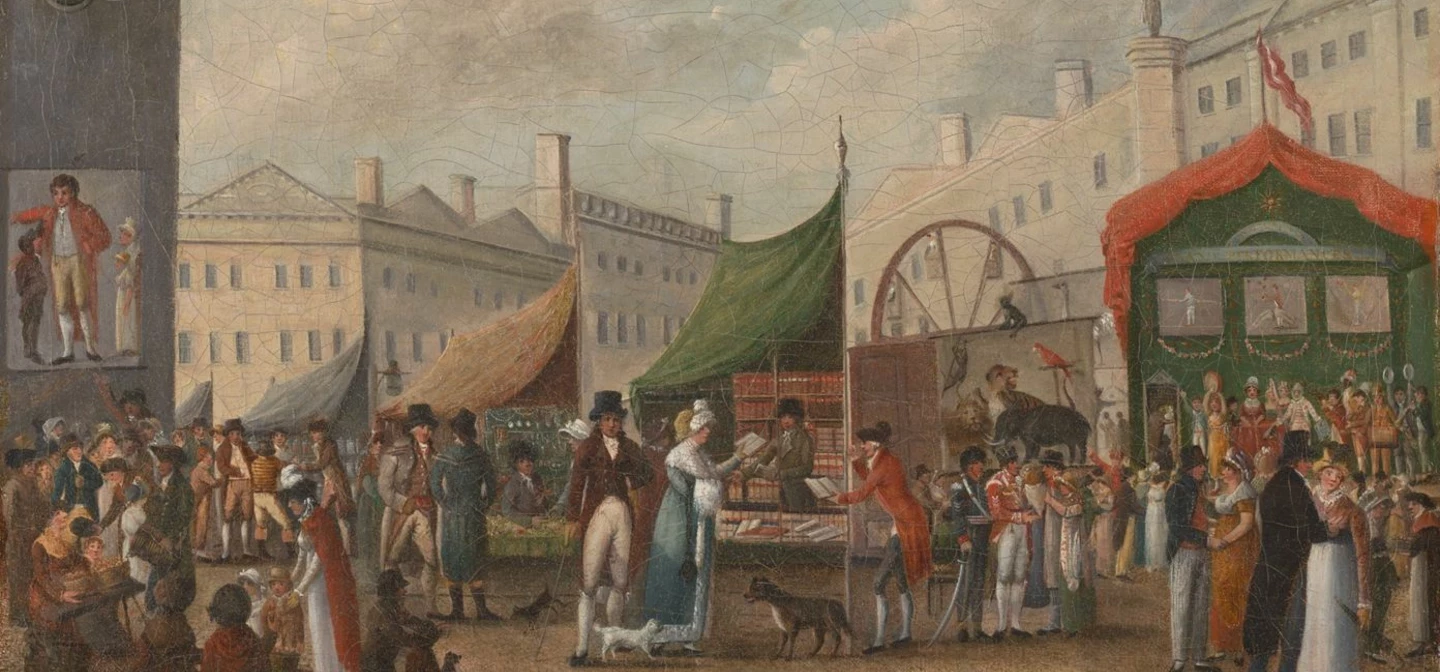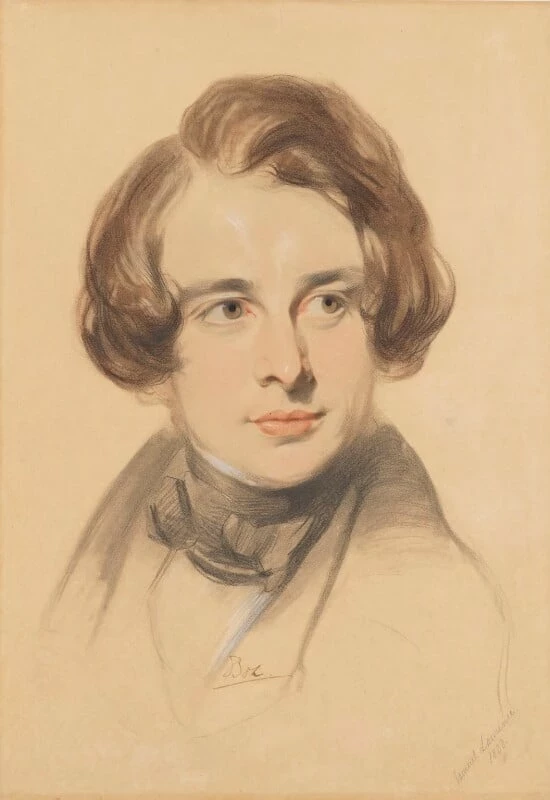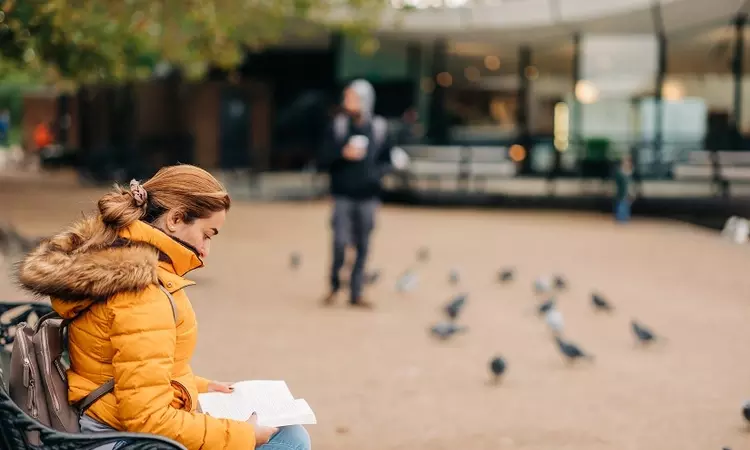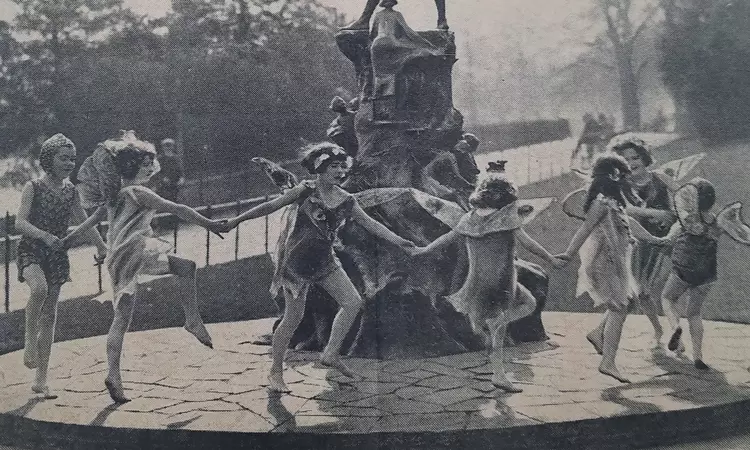
Charles Dickens at Greenwich Fair
Over the centuries, many famous writers have found inspiration at Greenwich Park. Perhaps the most celebrated is Charles Dickens (1812-1870), the author of some of our best-loved novels and stories – including Oliver Twist, Great Expectations, A Tale of Two Cities, Little Dorrit, Hard Times and A Christmas Carol. He was perhaps the archetypal Victorian Londoner, who would walk for miles all over the city.
Greenwich is one of London's most historic and scenic areas and has for centuries been a transport hub, by water and land. In 1840 it became one of the first places in the world with its own railway station, playing a crucial role in its accessibility and popularity.

As a young journalist, before he found fame, Dickens wrote a series of short pieces known collectively as Sketches by Boz. Published in newspapers between 1833 and 1836, each of these ‘sketches’ offered a humorous look at a different slice of London life – some described events or locations in the city, whilst others focused on memorable local characters.
In 1835, Dickens turned his attention to the Greenwich Fair – a lively and wildly popular event that was held twice a year from the early 1700s until 1857, when it was outlawed for being too rowdy! The Fair spilled out from Greenwich town centre into Greenwich Park and was a hive of activity.
Lucky visitors were spoiled for choice when it came to entertainment. They could have their fortunes read, see wild animals in cages, listen to musicians and view panoramas of foreign cities. Vendors sold fried food, sweet treats and small toys for children. In the park, the most popular activities included ‘tumbling’ – charging courageously down one of the park’s steep hills – and playing traditional games.
When Dickens came to write about Greenwich Fair in Sketches by Boz, he captured its sights and sounds in his inimitable wry and witty way. Let’s find out what he had to say…
All the fun of the fair

Dickens opens his sketch by imagining Greenwich Fair as a type of temporary ‘fever’ erupting across London:
If the Parks be 'the lungs of London,' we wonder what Greenwich Fair is--a periodical breaking out, we suppose, a sort of spring-rash: a three days' fever, which cools the blood for six months afterwards, and at the expiration of which London is restored to its old habits of plodding industry, as suddenly and completely as if nothing had ever happened to disturb them.
Dickens goes on to describe some of the attractions on offer in the park:
The chief place of resort in the daytime, after the public-houses, is the park, in which the principal amusement is to drag young ladies up the steep hill which leads to the Observatory, and then drag them down again, at the very top of their speed, greatly to the derangement of their curls and bonnet-caps, and much to the edification of lookers-on from below. 'Kiss in the Ring,' and 'Threading my Grandmother's Needle,' too, are sports which receive their full share of patronage.
‘Kiss in the Ring’ involved players joining hands and dancing around in a circle, singing. A player in the middle of the circle would then select someone to ‘kiss’, before being chased by them. ‘Threading my Grandmother’s Needle’ was a game in which two long rows of hand-holding revellers would face each other. The two people at the end of the lines would form an arch with their joined hands, and all of the other players would then pass underneath it, typically while singing a song.
Greenwich Hospital, a home for retired sailors, was located close to Greenwich Park. Its residents – known as ‘Greenwich Pensioners’ – were a familiar site in the park all year around. The fair was no exception. Dickens describes the old sailors who stood on top of hills in the park, charging fairgoers a penny in exchange for a look through their telescopes. The visitors would gaze out over London, asking the Pensioners to point out landmarks:
The old pensioners, who, for the moderate charge of a penny, exhibit the mast-house, the Thames and shipping, the place where the men used to hang in chains, and other interesting sights, through a telescope, are asked questions about objects within the range of the glass, which it would puzzle a Solomon to answer.
Another popular diversion at the fair was visiting a fortune teller. These women would read a visitor’s fortune in exchange for a fee – often predicting romantic happiness! Dickens describes a ‘woman in a red cloak’ who can be seen ‘prophesying husbands, which it requires no extraordinary observation to describe, for the originals are before her.’ He continues:
Thereupon, the lady concerned laughs and blushes, and ultimately buries her face in an imitation cambric handkerchief, and the gentleman described looks extremely foolish, and squeezes her hand… the prophecy, like many other prophecies of greater importance, fulfils itself in time.
Dickens ends his description of revelry in the park with a poetic meditation on the famous view over Greenwich, finishing with a reference to Greenwich Hospital – the home for retired sailors which is now a popular visitor attraction known as the Old Royal Naval College:
But it grows dark: the crowd has gradually dispersed, and only a few stragglers are left behind. The light in the direction of the church shows that the fair is illuminated; and the distant noise proves it to be filling fast. The spot, which half an hour ago was ringing with the shouts of boisterous mirth, is as calm and quiet as if nothing could ever disturb its serenity: the fine old trees, the majestic building at their feet, with the noble river beyond, glistening in the moonlight, appear in all their beauty, and under their most favourable aspect; the voices of the boys, singing their evening hymn, are borne gently on the air; and the humblest mechanic who has been lingering on the grass so pleasant to the feet that beat the same dull round from week to week in the paved streets of London, feels proud to think as he surveys the scene before him, that he belongs to the country which has selected such a spot as a retreat for its oldest and best defenders in the decline of their lives.
Though the Greenwich Fair hasn’t taken place for well over 150 years, the park remains a favourite leisure place for Londoners and visitors alike. You may not find fortune tellers or lion tamers here today, but the gentle pleasures of the park still offer a welcome respite from city life.
Related Articles
-
 Read
ReadThe Royal Parks in Literature
From Samuel Pepys to J.M. Barrie, discover the classic authors whose connections to London’s Royal Parks inspired and featured in their stories
-
 Read
ReadShrine of Youth: The Peter Pan Statue, Kensington Gardens
The Royal Parks are bursting with literary history. Perhaps the most famous fictional resident of the parks is Peter Pan – the boy who wouldn’t grow up.